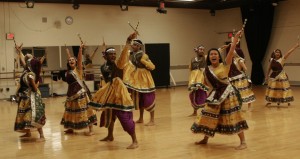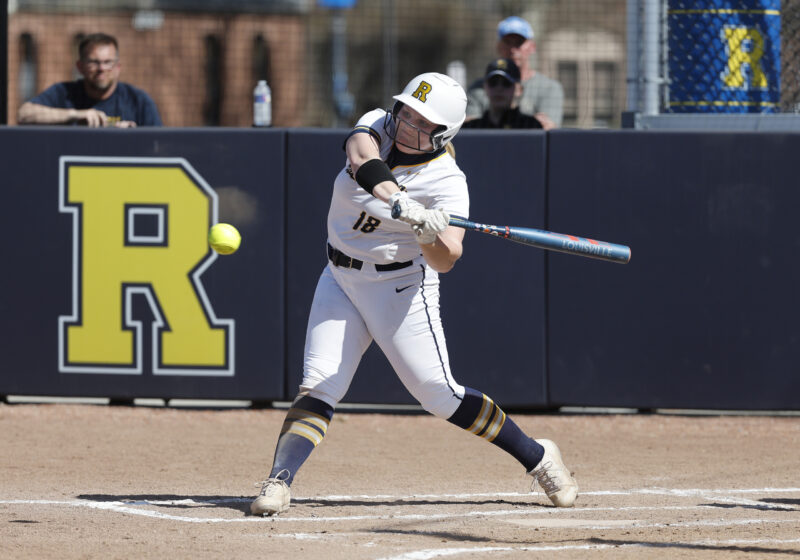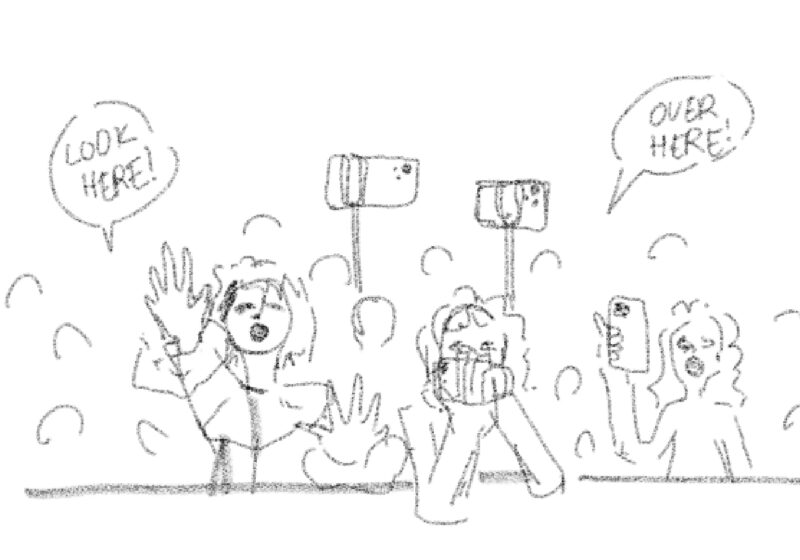
Drue Sokol, Photo Editor
For the average UR student, UR Raas and UR Bhangra are interchangeable names to describe the two Indian dance troupes on campus. Energetic music, boisterous props and decorative flashy costumes are common in both groups, but upon closer observation, each is actually very different.
Each state of the Indian subcontinent has its own customs and practices, including distinct music and dance that traces back to the nation’s early history.
From the northern state of Punjab, Bhangra is a type of folk dance that involves a specific rhythmic beat based on the sounds of the dhol, a type of Indian drum. As such, beat is crucial to the execution of Bhangra, serving to guide the dancers in their movements. While at times dancers can be found making very powerful movements through hitting motions, a shift in the beat of the dhol can drastically alter the mood of the dance.
“[Bhangra] is masculine and powerful, but can also have some graceful parts,” UR Bhangra co-captain and senior Amit Jhaveri said.
“The footwork is different in Raas and Bhangra,” UR Raas co-captain and junior Rohini Rege said. “While Bhangra is very strong, Raas is more fluid.”
From the western state of Gujarat, Raas is another form of traditional Indian dance. Raas differs from Bhangra in that it is characterized as a traditional religious dance, performed during a nine day festival known as Navrati, to honor the gods. In addition to a religious purpose, Raas is a way in which community is fostered during the celebrate.
There are also stark differences in props used by the dancers of each troupe. Commonly found in the hands of the colorfully-costumed Bhangra dancers are props that aid in the production of rhythm and beat.
It is common to see the use of a sapp, an instrument vaguely similar to the western accordion, creating a loud cracking noise meant to mimic a variety of sounds, such as thunder clapping or sounds used as a deterrent to crows in a farmer’s field.
Other noise-making props include katos, wooden sticks topped with carved squirrels that are moved like marionette puppets during the dance to make a clicking noise.
In Raas, the main props used are sticks about a foot and a half in length which are sometimes hit on the stage to produce noise. These sticks, called dandiyas, are made by UR Raas and twirled during the dance. In addition to sticks, girls dance while holding and throwing pots in an artful display timed to the music.
Both dances are celebratory, and bright colors and beautiful jewelry are commonly worn. In Bhangra, the most important garment donned is the head covering worn by males. This headdress, reminiscent of the turban, is regarded as sacred. Even making contact with the floor is considered disrespectful.
In Raas, the costumes of the female dancers are the focal point. They wear long skirts along with beautifully colored headscarves. The combination aims to mimic the flowing rhythm of the music.
Both Raas and Bhangra have adapted to serve a global stage, integrating more modern music and props and transforming these folk dances into modern performances.
While these dances differ greatly in style and show, the UR teams have worked together to fill a niche on campus.
“We both perform on and off-campus, for charity organizations and competitions,” UR Bhangra member and sophomore Alap Patel explained. “While both teams can be competitive at times, there’s still a sense of camaraderie.”
Raas and Bhangra are a great example of UR’s commitment to both cultural diversity and collaboration.
Lerner is a member of the class of 2016.





